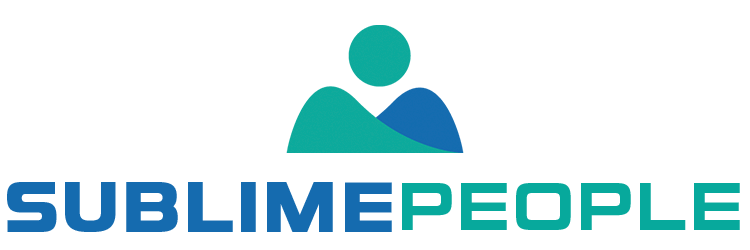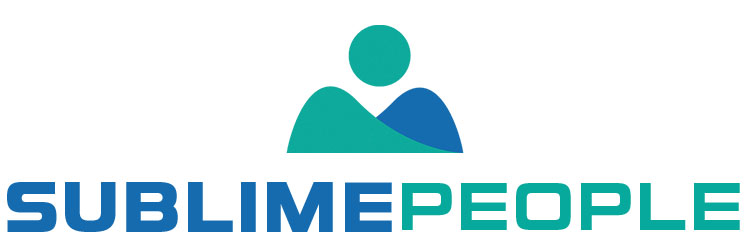Deep breathing is one of the best ways to lower your body’s stress. Breathing deeply tells your brain that you need to relax and stop worrying. It also sends this message to the rest of your body. When you are stressed, your breathing becomes fast, and your heart rate goes up. If you want to relax, try using the following 9 breathing techniques for relaxation.
In this Article:
What are breathing techniques for relaxation?
Breathing techniques for relaxation are conscious techniques to change the way you breathe. They are used in a variety of activities from singing to diving and from yoga to exercising. They are also used in therapy to help you relax.
How can you control your breathing?
By focusing on your breath you can make yourself breathe differently. Start by focusing on the air entering and leaving your body. After realizing how you breathe you can start playing with your breath. You may control your breath by keeping track of how long you inhale and exhale, breathing only through your nose or mouth. Another alternative is to take an equal amount of breaths in a minute or a certain amount of time. All these different techniques can help you gain control over your breath, which in turn will help you gain control over your body and mind.
Belly breathing
Most breathing techniques for relaxation focus on belly breathing, which is simply inhaling and exhaling while allowing your stomach to expand on the inhalation and shrink back on the exhalation. This type of breathing is also called diaphragmatic breathing. If you are doing this correctly, it will feel like the air is going to your belly. It should be easy for someone to see your belly change with each breath you take.
Chest breathing
Chest breathing is the opposite of belly breathing. In chest breathing, you expand your chest instead of your stomach. This type of breath is not as deep of a breath and is not as effective in lowering your heart rate or blood pressure.
What are the benefits of learning breathing exercises
You will be able to release negative emotions and tension, reduce anxiety and stress, lower blood pressure, get more oxygen to the brain, control neurotransmitters in the brain, control pain, and have a better self-image of yourself.
Relieve stress and anxiety
Breathing exercises work by calming and de-stressing. They also help you relax and control your mind and body, controlling the way you think and feel. They might protect you from panic attacks, but you should talk with a mental health professional if you have a medical issue and you want to try breathing exercises.
Release muscle tension
Deep breathing exercises increase oxygen to the cells of your body which reduces tension in muscles and leaves the bloodstream with more red blood cells. This means your muscles receive more oxygen.
Get more oxygen to the brain
When you take more deep breaths, there is a greater change in the level of oxygen in your blood. You will receive more oxygen to your brain which helps with concentration and memory.
Lower blood pressure
Breathing exercises help to relax the muscles around your blood vessels. This means that they’ll relax and open up, which lowers blood pressure.
Control neurotransmitters in the brain
When you take deep breaths it makes your brain release hormones like serotonin and dopamine, which are chemicals that make you feel calm and happy.
Get more oxygen to the brain
Your breathing pattern determines how much oxygen you get to your brain. Good breathing techniques can make you more alert, improve your memory and concentrate better.
Feeling relaxed
Breathing techniques can help you feel relaxed. Your body will have to make a relaxation response when you inhale slowly, making you feel at ease. Focusing on your breath instead of your worries will also help you get in a relaxed state.
Where and when can I do breathing techniques for relaxation?
Breathing exercises can be done anywhere and everywhere. The easiest way is by sitting or lying down, but you can also do it standing up, or walking. The best thing you can do is find a comfortable chair or sofa or simply unfold a mat on the floor.
There are certain moments in which you might want to do breathing exercises. Usually, people practice breathing techniques before a big meeting, before giving a concert, before going to sleep, or when they feel anxious or stressed. These techniques can also be done during activities such as meditation, yoga, tai chi, pilates, or when having massage sessions.
Breathing techniques for relaxation
Below we discuss 9 breathing techniques for relaxation that will help you unwind. You can practice them at home or out in the world. Choose a quiet place where you can sit down or lie down without being disturbed. When you are lying down you can put a pillow under your head, another option is to put a pillow under your knees to keep your knees bent.
1) Pursed lip breathing
One of the common deep breathing techniques is pursed-lip breathing. You breathe in gently through your mouth and exhale forcefully through your mouth with pursed lips. The mouth should be closed when you breathe in though. During this exercise, you take slow deep breaths.
Before you start
Practice using this breath 4 to 5 times a day when you begin in order to correctly learn the breathing pattern. Do this exercise properly lain or sit comfortably and have your neck and shoulders relaxed. Start by doing this exercise 3 times in a row.
Instructions
- Inhale slowly through your nose for 2 counts.
- Pucker your lips. Pretend you are blowing out a candle.
- Exhale slowly by blowing air through your pursed lips for a count of 4.
Extra information
- You can do this exercise, when you are working out or doing other tasks. This breathing technique is often used by singers, actors, and public speakers to improve their performances.
2) Deep Breathing Technique
Deep breathing is one of the best ways to start controlling your breathing. Normally, when you are stressed or anxious you tend to take short and shallow breaths. With deep breathing techniques, instead, you force yourself to do the opposite and take long and deep breaths. It may well be that your mind and body feel instantly calmer taking deeper breaths.
Before you start
Before you start this exercise, find a comfortable chair, sofa, or mat on the floor. For best results, do this exercise 3 times in a row. Start with focusing on your breathing, and relaxing your belly area. You will breathe through your nose.
Instructions
- Inhale slowly through your nose, and let your belly increase in size (around 3-7seconds)
- Fill your lungs all the way up with air.
- Breathe out through your nose, and empty your lungs all the way out.
Extra information
- This exercise is straightforward and simple to do, it can be easily done when you are nervous in a situation like a presentation, first date, or interview.
- To do this breathing exercise even better, you can put your hands on your stomach while you are breathing in. Your hands should notice the stomach rise.
- Imagine you have a balloon in your tummy. As you breathe in, imagine you are inflating it with air. As you breathe out, imagine releasing the air slowly from the balloon.
Inhale and exhale deeply for several cycles. Deep breathing can assist you in relieving shortness of breath by preventing air from being trapped in your lungs and allowing you to breathe fresh air. It may make you feel more calm and more centered.
3) Progressive Muscle Relaxation
When you have anxiety or stress, your body may respond with muscle tension. That is, your muscles become stiff, which can cause headaches, neck aches, lower back pain, or other body pains. Since stress is linked to muscle tension, relaxation can be linked to muscle relaxation. With progressive muscle relaxation, you manage stress by relaxing your muscles.
Before you start
In this exercise, you will focus on a muscle group in your body and make it tense. In other words, you will tighten the muscle group. To do this, you will need to know the muscle groups in your body that you can tighten. Therefore it is best to do this with an audio version.
Lie down for this exercise, and make sure you can work uninterrupted. Make sure you are completely relaxed before you start. It will take around 5 minutes to go through your whole body. Don’t tighten your muscles too hard, because you might a cramp that way.
Instructions
- Breathe in for 5 seconds and simultaneously tense the muscles of your feet.
- Breathe out and at the start of breathing out completely release the tension in your feet.
- Relax your whole body for 15 seconds, and notice the relaxation in your feet.
- Now move up to the next body part (your thighs) and do the rest of your body.
Extra information
- Progressive Muscle Relaxation techniques are a great way to learn about your body. Having control over your body can make you feel more confident. Paying attention to the different muscle groups and how they make you feel, will help you to notice how different areas of your body respond to stress.
- This technique will take a bit of effort, but your whole body feels relaxed when you have done it. Try doing it when you have trouble sleeping, or when you get muscle tension.
- When you feel too much tension in a part of your body due to stress, be careful not to overdo it. If you feel pain in a body part, speak to a doctor about this technique.
4) Breath Focus
The breath focus technique is a deep breathing technique mixed up with visualization. While taking breaths, think about words or sentences that make you feel better. It’s best if the words are positive and encouraging, such as “I am relaxed” or “I can do this”. This breathing technique is a great way to clear away negative thoughts and feelings from your mind.
Before you start
Choose something that you want to attract, and choose something that you want to let go of. Something that you want to have or attract could be relaxation, happiness, love, beauty, understanding, or peace. Something that you want to let go of could be stress, fatigue, pain, anger, fear, sadness, or confusion. Now phrase those things in a way that can go with breathing in and breathing out. When doing this exercise close your eyes.
You can do this technique 3 times, but to increase the effect of the visualization, it is better done 3-10 minutes every day.
Instructions
- Take a deep breath in, and say the phrase in your mind that you want (e.g.: “I am relaxed, confident, and safe”). Feel this positivity go inside of your body just like the breath goes inside your body. Let the positivity spread through your body just like oxygen does.
- Take a long breath out, and say the phrase in your mind that you don’t want (e.g.: “I let all the tension and fear leave my body”). Let all the negativity leave your body, just like your air leaves your body. You don’t need it anymore.
Extra information
- You can imagine a place where you do this exercise as well, such as a beach, forest, open field, beautiful jungle, or waterfall. As you breathe in, imagine that the air is filled with positive energy from this place. As you breathe out, imagine releasing all your worries and problems so they can float away with the wind.
- Sometimes it is better not to focus on the negative things, so you might want to only use the positive phrase and leave the negative phrase away. Try it out, and see which way you relieve stress.
5) Coherent breathing
Coherent breathing means equal time for both parts (inhale and exhale) in your breath cycle. In other words, you will take the same length of time inhaling as you do exhaling.
Before you start
When you breathe, your regular routine is to exhale slower than you inhale. You take around 1.5 times more time to exhale than inhale. The coherent breathing technique requires you to force yourself to exhale longer than the norm. This might be a bit weird at first, but learning to control your breathing is part of the exercise. Eventually breathing the same amount in and out will make you feel balanced and relaxed. You do this exercise for 1 minute long, the goal is to take 5 breaths in 1 minute.
Instructions
- Take a deep breath in for 5 seconds long
- Take a deep breath out for 5 seconds long
Extra information
- Once you feel comfortable with breaths that last five per minute, increase the amount of time spent on breathing in and out. This will develop your breath control even further.
- Do this exercise in a comfortable position without much distraction. You will need to be able to count to five to do this exercise. If you have a hard time counting, try doing it with a timer.
- According to a study done in 2017, this type of breathing can reduce symptoms of depression when combined with Lyengar Yoga.
- Equal breathing is known as Sama Vritti in Sanskrit. According to yoga, this breathing technique creates a calm and peaceful mind.
- Breathing at this rate increases your heart rate variability (HRV), which reduces stress. It also reduces the psychological effects of stress by decreasing cortisol levels that you get with high-stress levels.
6) Modified Lion’s Breath
The Lion’s breath is a yogic breathing technique, where you stick out your tongue and roar like a lion. A Lion’s breath is a type of breathing that makes you feel less stressed. It also eliminates toxins and stimulates your throat and upper chest. In yoga, you would also do the Lion’s pose.
Before you start
This breathing exercise might feel weird to do at first, but you will get used to it. To do this exercise, you will have to put self-consciousness aside. It is meant to be weird, so don’t worry about it. When you do the exercise imagine being a lion. Find a quiet location where you can do this alone.
Instructions
- Take a deep breath through your nose. Fill your stomach to the top with air.
- Open your mouth as wide as you can, stick out your tongue, and extend it down toward your chin.
- Exhale forcefully, and make an HA sound when breathing out
- Gently breathe a few times, and do it again.
Extra information
- To reduce the stress you can do the lion’s breath for a few minutes, and then finish with some deep breaths.
- You can also not stick out your tongue and breathe out through your mouth like a lion and say HAAA. That is also very good for stress relief.
7) Alternate nostril breathing
Alternate nostril breathing is one of the many relaxation techniques of yoga. It is also known as Nadi Shodhana Pranayama in Sanskrit.
Before you start
When performing this exercise, sit down comfortably. Make sure your back is straight and that you are not slumping. Alternate nostril breathing is best done on an empty stomach. If you’re feeling sick or is your nose congested, skip the exercise. Maintain a steady flow of air throughout the practice by keeping your breath smooth and even.
Instructions
- Take your right hand, and press your first finger and middle finger down toward your palm.
- Leave your other fingers stretched out
- Start paying attention to your breathing
- After an exhale, use your right thumb to close your right nostril.
- Inhale through your left nostril.
- Close your left nostril with your right pink and ring finger.
- Exhale out through your right nostril
- Inhale in through your right nostril
- Close your right nostril
- Exhale out through your left nostril
- Inhale through your left nostril
- Close your left nostril, and release your right nostril
- Now continue back and forth inhaling and exhaling through each nostril.
Extra information
- You can also rest your first finger and middle finger between your eyebrows.
- Try to match the breathing in and breathing out of both nostrils.
- You can slow down the process by taking 15 seconds on each nostril.
8) Sitali breath
This technique is one of yoga’s breathing techniques for relaxation. When you do this you will feel refreshed, it lowers body temperature and helps to reduce anxiety and stress.
Before you start
With this exercise, you will breathe through your mouth, therefore it is best to have clean air around you. This breathing technique should be done seated.
Instructions
- Stick out your tongue
- Curl the side edges of your tong towards each other
- Inhale through your mouth.
- Exhale out through your nose.
Extra information
If your tongue doesn’t curl, you can also use pursed lips, like you are blowing out a candle. Do this exercise for 3-7 minutes.
9) Humming bee breath
In yoga, this technique is called Bhramari, and it can be helpful to reduce stress and anxiety. It is also sometimes practiced for anger management. It can elevate moods, and help fight aggression. The focus of this technique is to relax the forehead.
Before you start
You should do this exercise in a seated position. Before you start, close your eyes and make your face relaxed. You will make a sound during this technique, so you might want to find a private place. The tragus cartilage is the part of your ear that you can use to close.
Instructions
- Place your fingertips on the tragus cartilage.
- Inhale, and as you exhale gently press your thumbs on the cartilage closing of your ears.
- Keeping your mouth closed, make a humming sound.
Extra information
- Regular practice is to do this exercise 3 times, but you can also do it until you feel comfortable.
- You can also close your eyes with the palm of your hands.
- Another option is to put your fingers in front of your eyes when you close your ears with your thumbs.
A word from Sublime People
We hoped you enjoyed reading about these breathing techniques for relaxation and found some helpful tips on how to control your breathing. Breathing is a great way to relax and de-stress, so hopefully, this will give you something else to do if you want to unwind.
Do you have any other suggestions or want to share your own experiences? Leave us a comment!




